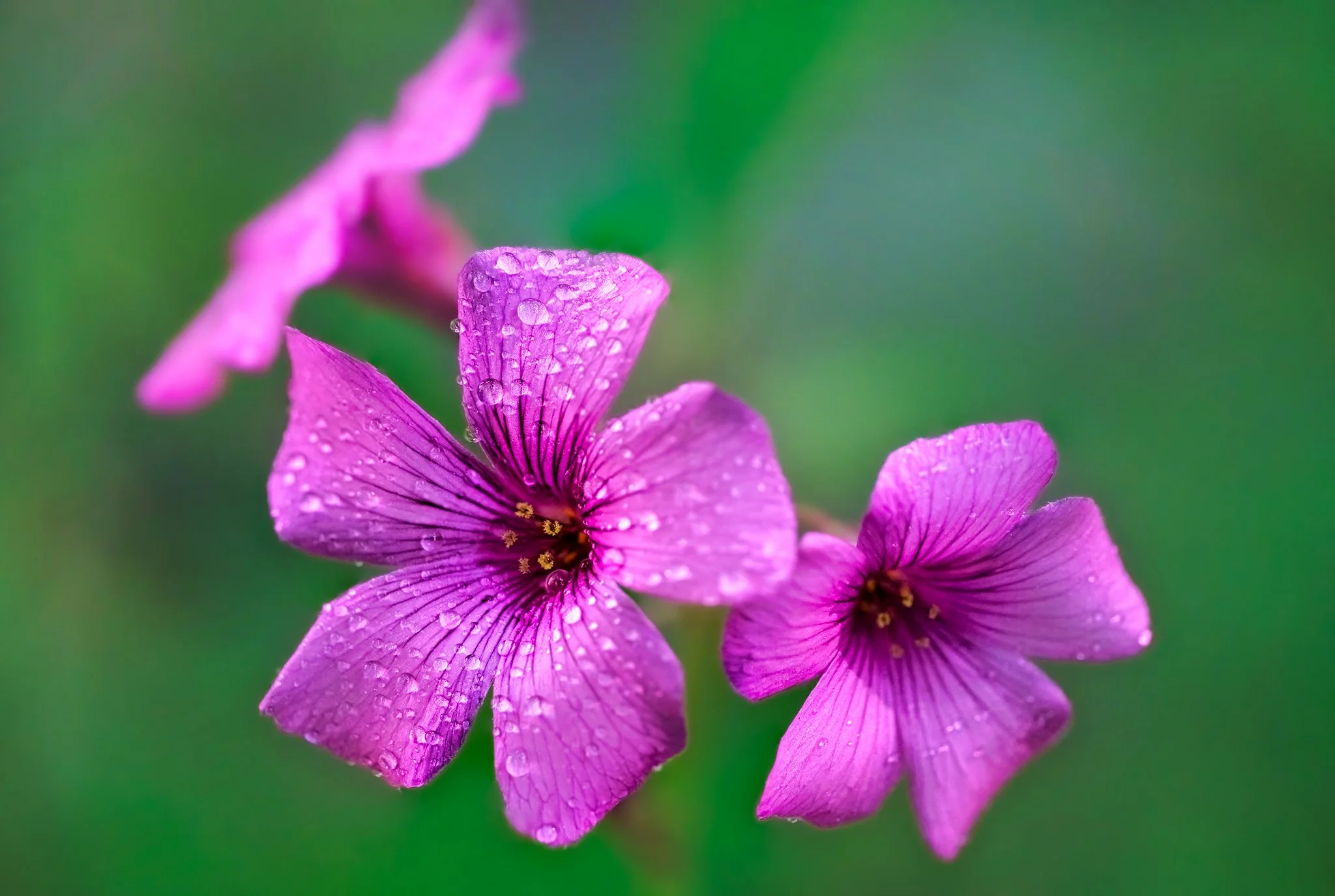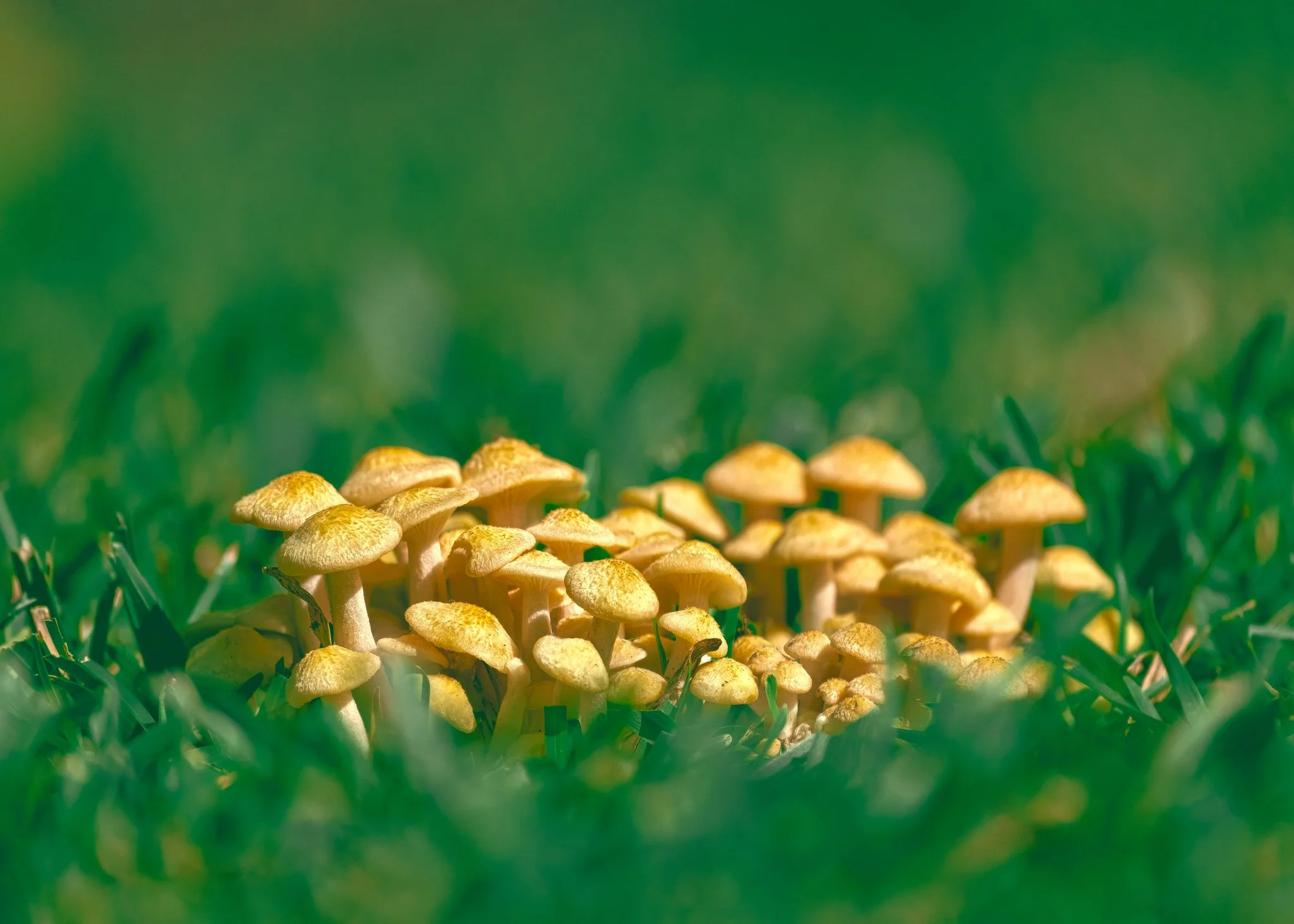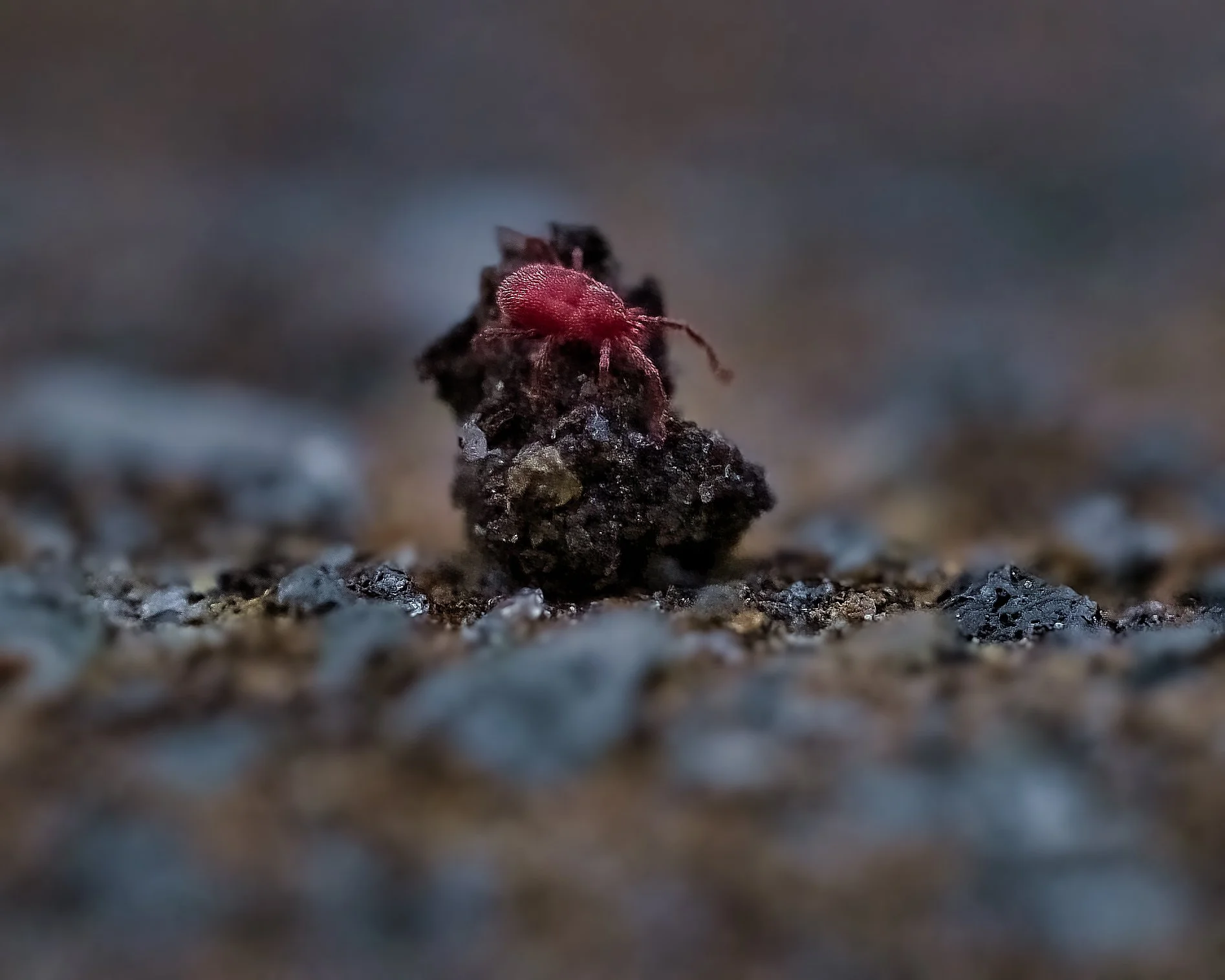Macro Photography, Up Close and Personal
As an Amazon Associate I earn from qualifying purchases.
There is a special kind of quiet that happens when you lean in close. The world shrinks to a petal edge or a tiny antenna, and everything else falls away. Most of these pictures were made on slow walks with my Fujifilm X-T5. I use a Laowa 65 mm 2x when I want extreme detail, and the XF 70–300 mm when I want a lighter, more versatile kit. The telephoto zoom is softer at close focus, yet it helps me bring home more keepers on days when subjects move.
Two lenses, two mindsets
Laowa 65 mm f/2.8 2x Ultra Macro APO
When I choose it. Flowers with fine veins, small mushrooms, still insects, and any time I want true macro magnification.
How I run it. Manual focus with focus peaking on the X-T5. I pre set the magnification on the lens, then rock my body a few millimeters to hit focus. I often start around f/8 to f/11 outdoors.
Handling tip. Use the X-T5 focus check magnification for precise placement on an eye, a stamen, or a gill edge. A short burst helps when hands sway.
FUJIFILM XF 70–300 mm f/4–5.6 R LM OIS WR
When I choose it. Caterpillars that will not sit still, skittish bugs, or hikes when I want one lens for birds, landscapes, and close ups.
How I run it. Aperture Priority, small AF point, Continuous AF. I let OIS help at moderate shutter speeds and raise ISO rather than missing a moment. I change my angle until the background is clean and distant.
Image character. Not as razor sharp up close as the Laowa, yet the longer working distance often leads to more varied shots in a single walk.
Field workflow that feels natural
Light first. Overcast or open shade is kind. If the scene is flat, I lift shadows with a small white card just out of frame.
Aperture starting points. Flowers around f/5.6 to f/8. Active insects f/8 to f/11. Adjust after test frames.
Shutter and ISO. On the Laowa I pick a safe shutter and use Auto ISO. On the zoom I set a minimum shutter and let Auto ISO climb as needed.
Focus technique. Laowa: manual focus, rock in and out. Zoom: small AF point on the near eye or leading edge, short bursts.
Body mechanics. Brace elbows, exhale slowly, shoot during the still part of your breath. Shield the subject from wind with your body.
Lens specific mini recipes
Flower veins with glow, Laowa 65 mm
Place the petal between you and a soft contrasting background, then shade the background with your hand or a reflector for a smooth field of color. Focus on the brightest vein edge. Take three frames with tiny fore and aft shifts.
Caterpillar portrait, either lens
Approach from the side, wait for the little one to pause, then snap your shot. Keep the background several feet behind the subject by shifting your stance, or keep some foreground for context.
Mushrooms, XF 70-300
Set the camera low on a mini support or ground pad. Stop to f/8 to f/11, make a short focus stack if the cap edges and gills will not fit in a single plane.
Redbug on dirt clump, Laowa 65 mm
Angle the light so it grazes the texture. A white card just out of frame lifts the shadow side without startling the insect.
When and how to use flash
Keep flash low and soft. A small speedlight with a diffuser or a compact LED helps freeze motion and shapes highlights. Bring the diffuser close, angle it slightly off axis to avoid a bright specular dot on glossy shells, and let the background fall a little darker for separation.
Gentle camera settings for the X-T5
Shutter mode. Electronic Front Curtain reduces micro shake in close ups.
Focus aids. Focus peaking and focus check magnification for the Laowa.
Drive. Short bursts for moving subjects.
White balance. Set by intent. Cooler for airy flowers, warmer after rain in the woods.
Troubleshooting
Everything looks soft. Raise shutter speed, brace, and shoot short bursts.
Harsh flash look. Lower power, bring the diffuser closer, and angle slightly to the side.
Busy background. Change height or rotate around the subject until the background smooths out.
Green or brown color cast. Nudge tint toward magenta or set a custom white balance.
Wind wobble. Wait for the lull, shield with your body or a jacket.
What I used and why
As an Amazon Associate I earn from qualifying purchases.
These Fuji friendly picks and accessories pair well with a two lens approach. Replace the brackets with your links.
Lenses
Venus Laowa 65 mm f/2.8 2x Ultra Macro APO (Fuji X)
Why: True macro magnification with crisp detail when subjects hold still.FUJIFILM XF 70–300 mm f/4–5.6 R LM OIS WR
Why: Flexible walkabout lens with useful close focus for larger insects and quick moments.
Get closer with the zoom
Close up diopter
Why: Adds magnification without changing lenses. Great for the 70–300 on hikes.Extension tubes for Fuji X
Why: Inexpensive way to reduce minimum focus distance. Choose AF enabled tubes for convenience.
Premium Pick: FUJIFILM Macro Extension Tube MCEX-16Budget pick: MEIKE MK-F-AF3 Auto Fucus Macro Extension Tube
Light and diffusion
Compact speedlight for Fuji + small diffuser
Why: Low power pops freeze motion and keep ISO reasonable.Top Choice: Godox V860III
Another good option: Godox TT600
Pocket LED panel
Why: Constant light for mushrooms and still life in shade.
G2 Pocket RGB Camera Light5 in 1 reflector, 30 to 32 inch
Why: White for fill, translucent for soft overhead sun.
NEEWER 32-Inch 80CM Portable 5 in 1
Stability and control
Mini tripod or ground support
Why: Mushrooms and low flowers become easy when the camera sits inches off the forest floor.
NEEWER Portable Desktop Mini Tripod
This upgrade pick let’s you attach your camera almost anywhere:
JOBY GorillaPod Compact TripodFocusing rail
Why: Precise fore aft movement for calm subjects and focus stacks.
NEEWER 4-Way Macro Focusing RailRemote release
Why: Reduces micro shake for tripod shots and stacks. Be sure to grab one suitable for your camera. This is the one I use for Fuji. Some camera brands also have an app for this.
Fujifilm Remote Release RR-100
Small field helpers
Flexible clamp arm to hold a leaf or reflector.
Kneeling pad for comfort.
Soft brush and blower for clearing stray debris.
If any of these help you, using these links supports my little corner of the internet at no extra cost to you.
The magic of macro photography is revealing worlds we'd otherwise miss. Using a shallow depth of field, I was able to isolate these tiny, dew-kissed blossoms from the background, making every single water droplet a point of interest.
A tiny traveler making its way through a green jungle. Macro photography allows us to appreciate the delicate beauty of even the smallest creatures, like this blue and white caterpillar making its way across a vibrant patch of moss.
A tiny city of mushrooms pops up overnight. The recent summer rains here have made the lawn a perfect place for macro exploration. I love how getting low to the ground with a wide aperture can transform something so simple into a magical, miniature world.
A tiny world of vibrant color. This red mite, almost invisible on the pavement, becomes a fascinating subject under a macro lens. Capturing a subject this small is a fun challenge in patience and focus, but the result is a glimpse into a world we rarely see.
Frequently asked questions
Do I need a dedicated macro lens to start
No. Extension tubes on a lens you already own can get you very close. A true macro lens is more convenient and often sharper at high magnification.
What aperture should I use
Start at f/5.6 to f/8 for flowers and f/8 to f/11 for insects, then adjust after a few test frames.
How close can I get without scaring insects
Move slowly, approach from the side rather than straight on, and keep the diffuser close to the flash, not the subject.
Is flash safe for insects
Low power, diffused light is generally tolerated. Avoid repeated high power bursts at close range.
How do I handle wind
Work early or after rain. Shield the subject with your body, then shoot during the still moments.



